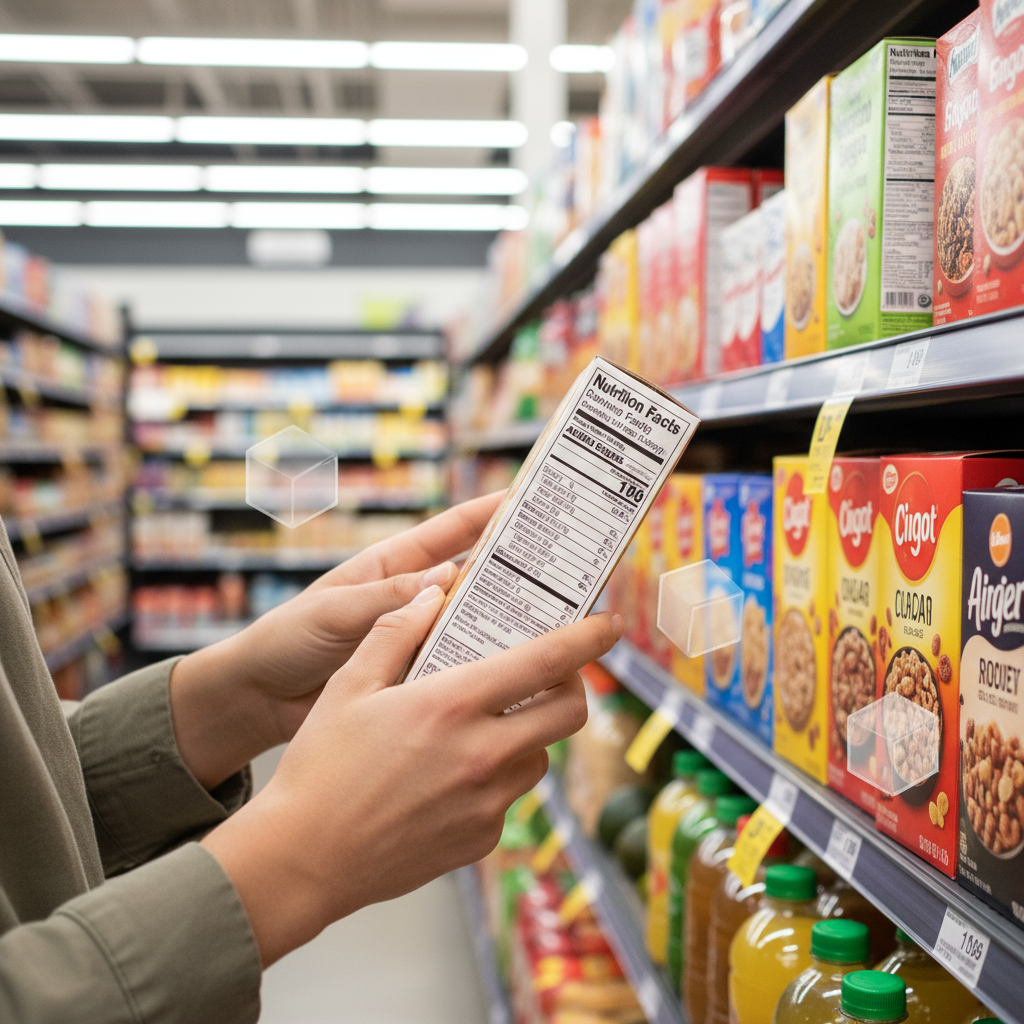
Table of Contents
Introduction
Want to know one of the simplest ways to boost your energy and feel amazing? Cut back on sugar. I know, I know—easier said than done, right? But here’s the thing: reducing your sugar intake doesn’t mean saying goodbye to everything you love. It’s about making smarter choices that’ll have you feeling better than you have in years.
Here’s what we’re dealing with: most of us are eating way more sugar than we realize. We’re talking hidden sugars lurking in everything from your morning yogurt to that “healthy” granola bar. And the research? It’s pretty clear—too much sugar is linked to obesity, diabetes, heart problems, and even those dental bills that make you cringe. The good news is that plant-based diet benefits naturally help reduce added sugars (bonus points for your wallet and waistline). Plus, when you pair this with some effective workout routines you can do right at home, you’re setting yourself up for serious success.
Let’s be honest—sugar cravings are real. That 3 PM chocolate calling your name? The way you automatically reach for something sweet after dinner? These habits run deep. But mindful eating can be a game-changer here. When you start paying attention to what triggers those sugar urges, you can plan ahead with meals that actually satisfy you. Natural sweeteners and whole fruits become your new best friends. And while we’re talking about being more aware of what we eat, learning about things like how to reduce sodium intake gives you the full picture of healthy eating (trust me, it all connects).
Now, here’s something interesting—your success with reducing sugar isn’t just about willpower. Your daily habits, stress levels, and even how you manage your time all play a part. That’s why strategies for productivity and time management actually support your health goals. When you’re less stressed and more organized, you’re less likely to grab that sugary snack out of desperation. It’s all connected.
What You’ll Learn in This Guide
Ready to transform your relationship with sugar? Here’s exactly what we’ll cover together:
- Understanding Sugar and Its Health Impacts: We’ll break down what sugar actually does to your body—the good, the bad, and why your energy crashes every afternoon (spoiler: it’s probably the sugar).
- Identifying Hidden Sugars in Foods: Time to become a sugar detective. You’ll learn to spot the sneaky stuff hiding in “healthy” foods and decode those confusing nutrition labels like a pro.
- Practical Strategies to Cut Sugar: No extreme diets here—just realistic, doable steps to gradually reduce sugar without feeling like you’re missing out on life.
- Benefits of Lowering Sugar Consumption: Get ready for better sleep, steady energy, and maybe even dropping a few pounds without trying too hard.
Throughout this journey, we’ll explore practical approaches and share tips that actually work in real life (not just on paper). And since we’re talking about creating healthier habits overall, you might want to check out these practical strategies to reduce screen time—because less scrolling often means less mindless snacking.
By the time you finish reading, you’ll have a clear, personalized plan that fits your actual life. No impossible standards or perfect meal prep required. Just practical steps that’ll help you feel more energetic, confident, and in control of your health choices.
Ready to discover not just what to avoid, but what to embrace instead? Let’s start building habits that’ll stick around long after the initial motivation fades. Your future self is going to thank you for this.

Let’s talk about sugar—and why cutting back might be one of the smartest moves you can make for your health. We’re not talking about going cold turkey here (that rarely works anyway). But here’s the thing: most of us are consuming way more sugar than we realize, and it’s quietly wreaking havoc on our bodies. Think obesity, diabetes, heart disease—the whole lineup of health issues we’d rather avoid. The good news? Once you know where all that sneaky sugar is hiding and pick up some practical tricks to reduce it, you can actually turn things around. We’re going to dig into the biggest sugar culprits lurking in your pantry, share some realistic ways to cut back, and explore why your body (and energy levels) will thank you for making these changes.
Common Sources of Added Sugars and How to Identify Them
Here’s where things get interesting—sugar has become a master of disguise. You’d expect it in candy and soda, sure. But would you guess it’s hiding in your “healthy” granola bar or that innocent-looking bottle of marinara sauce? Becoming a label detective is your first line of defense. Start flipping those packages over and scanning for sneaky sugar aliases like sucrose, high fructose corn syrup, and glucose. (Pro tip: if it ends in “-ose,” it’s probably sugar.) Once you start spotting these sugar bombs, you’ll wonder how you missed them before.
The biggest offenders? Processed snacks and drinks, hands down. That flavored yogurt you grab for breakfast? Probably loaded. Your afternoon energy drink? Sugar central. Even things that seem virtuous—like that fresh-pressed juice or “natural” granola bar—can pack more sugar than a candy bar. I know, it’s frustrating. But here’s the empowering part: when you know what to look for, you can make choices that actually support your goals instead of sabotaging them. Check those nutrition labels for sugar content per serving, and don’t forget to scan the ingredients list. Your future self will appreciate the effort.
Hidden Sugars in Everyday Foods
Ready for some sugar hide-and-seek? Let’s uncover where these sweeteners love to camp out:
- Processed Beverages: Those sugary sodas, energy drinks, and sweetened teas aren’t just empty calories—they’re liquid sugar bombs that send your blood sugar on a roller coaster ride you definitely didn’t sign up for.
- Snack Foods and Baked Goods: Cookies and pastries are obvious, but even savory chips can contain sugar for flavor enhancement. Small servings, big impact on your daily sugar tally.
- Sauces and Dressings: This one surprised me the first time I noticed it. Ketchup, BBQ sauce, even some salad dressings can be sugar goldmines. A little here, a little there—it adds up fast.
- Breakfast Items: Starting your day with sweetened cereal or flavored oatmeal? You might as well be having dessert for breakfast. Add syrup on top, and you’re looking at a sugar overload before 9 AM.
The trick is becoming intentional about your choices. Look for naturally sweetened alternatives or better yet, products with no added sugars at all. For more insights on building a balanced approach to eating, check out these guidelines on healthy nutrition plans.
Now that you know where sugar likes to hide, let’s talk about realistic ways to show it the door—without making your meals taste like cardboard.
Effective Strategies to Reduce Sugar Intake Gradually
Here’s the reality check: going from sugar-loving to sugar-free overnight is a recipe for failure. Your taste buds need time to adjust, and honestly, so does your willpower. The smart approach? Make gradual changes that stick. We’re talking about retraining your palate, improving your overall nutrition, and creating habits you can actually maintain. Focus on cutting sugary drinks first (they’re the low-hanging fruit), experiment with natural sweeteners, and practice what I like to call “conscious eating”—actually paying attention to what and why you’re consuming.
Let’s start with the biggest game-changer: ditching sugary beverages. Seriously, this one move alone can slash your daily sugar intake dramatically. Replace those sodas and sweetened drinks with water, herbal teas, or water infused with fresh fruit. Your body will notice the difference within days. Next up: natural sweeteners. Honey, maple syrup, and stevia can satisfy your sweet tooth without the harsh blood sugar spikes. And here’s a simple but powerful strategy—reach for whole fruits when you’re craving something sweet. You get the sweetness plus fiber, vitamins, and nutrients that actually nourish your body. It’s a win-win that your cravings will start to appreciate.
Healthy Substitutes and Mindful Habits
Let’s get practical with some swaps and habits that actually work in real life:
- Natural Sweeteners: Stevia, monk fruit, and raw honey deliver sweetness without the blood sugar chaos. Use them sparingly—a little goes a long way, and your taste buds will gradually adapt to less intense sweetness.
- Whole Foods: Fresh fruits and vegetables aren’t just healthy—they’re naturally sweet and packed with fiber that helps you feel satisfied longer. Plus, the vitamins and antioxidants are like bonus points for your health.
- Mindful Eating: This isn’t just wellness buzzword bingo. Tuning into your hunger and fullness cues can prevent mindless snacking and emotional eating—two major sugar consumption triggers.
- Meal Planning: When your meals include adequate protein, healthy fats, and fiber, your blood sugar stays stable. Translation? Fewer intense cravings for sugary quick fixes.
Want to dive deeper into sustainable nutrition approaches? The information on plant-based diet benefits offers valuable insights on gradual dietary improvements. These habits don’t just reduce sugar—they upgrade your entire relationship with food.
As you implement these changes, you’ll likely notice some pretty amazing side effects: steadier energy throughout the day, easier weight management, and overall better health markers. The journey gets easier as you go, and sometimes a little professional guidance can help you fine-tune your approach for even better results.

Here’s the truth: cutting back on sugar isn’t just another diet tweak—it’s genuinely life-changing. Once you start spotting all those sneaky sugar sources hiding in everyday foods (and trust me, they’re everywhere), you’ll finally understand why those cravings feel so intense. The good news? You don’t need to go cold turkey. Gradual changes work best, giving your taste buds time to adjust without feeling like you’re punishing yourself. When you swap in natural sweeteners, enjoy whole fruits, and focus on balanced meals, you’re actually nourishing your body while still satisfying that sweet tooth.
But here’s where it gets really interesting—the benefits go way beyond just losing a few pounds. You’ll notice your energy stays steady instead of crashing every afternoon. Your sleep improves. Your brain feels clearer (goodbye, afternoon fog!). Plus, you’re protecting yourself from diabetes, heart problems, and those dreaded dental bills. The real game-changer? Learning to eat mindfully. When you start paying attention to what triggers your cravings and make conscious choices, you develop this amazing confidence around food. You’ll actually hear what your body needs instead of what your sugar-addicted brain wants.
Ready to take action? Start exploring some delicious vegan meal prep recipes that naturally keep added sugars low while packing in real nutrition. And here’s something most people overlook: work on your time management skills too. When you’re organized and less stressed, you’re way less likely to reach for that quick sugar fix. Speaking of stress—since it’s probably driving half your cravings anyway—definitely check out these stress reduction methods. Your mind and body will thank you.
Now, here’s something that might surprise you: your financial health actually affects your sugar habits. When money stress hits, we tend to grab whatever’s cheap and convenient (hello, processed foods). That’s why building an emergency fund using this step-by-step guide can support your health goals in ways you might not expect. Less financial anxiety means fewer stress-induced sugar binges. It all connects.
Look, reducing sugar is one of the best investments you’ll ever make in yourself. Every small change you make today shows up as better energy, improved mood, and stronger health tomorrow. Be patient with yourself as you build these new habits—change takes time, and that’s perfectly normal. If you need personalized guidance, don’t hesitate to talk with a healthcare professional. You’ve got this, and you absolutely deserve to feel your best. Why not start today?
Frequently Asked Questions
-
How can I tell if a product has added sugar?
- Look for terms like sucrose, glucose, fructose, corn syrup, and other “-ose” endings in the ingredient list to spot added sugars effectively.
-
What are some good sugar alternatives?
- Natural sweeteners like stevia, honey, and maple syrup offer healthier alternatives to refined sugar when used in moderation.
-
Is reducing sugar intake beneficial for weight loss?
- Yes, reducing sugar can lower calorie intake, stabilize blood sugar levels, and support sustainable weight management efforts.
-
How quickly can I reduce my sugar intake?
- Gradual reduction is best to help your taste buds adjust and to maintain long-lasting healthier eating habits without withdrawal.
-
When should I see a doctor about sugar cravings?
- If sugar cravings are intense, persistent, or linked to health issues, consulting a healthcare professional or dietitian can provide tailored support.
